Top 10 Tips For Growing Tomatoes
As an Amazon Associate and member of other affiliate programs, I earn from qualifying purchases.
Growing tomatoes is not difficult, but they do have some unique qualities that are helpful to understand. Based on our many years of experience growing thousands of tomatoes at a time, these are our top tomato growing tips.
Truth be told, tomatoes can be one of the easiest plants to grow for beginners. That’s because, in nature where the only goal is survival, they are very vigorous and hardy plants.
But in a home garden, our goals are different. We don’t just want a live plant, we want lots of fruit for picking and snacking. So these tips for growing tomatoes will help you get the most out of your tomato garden.
10 tips for growing tomatoes
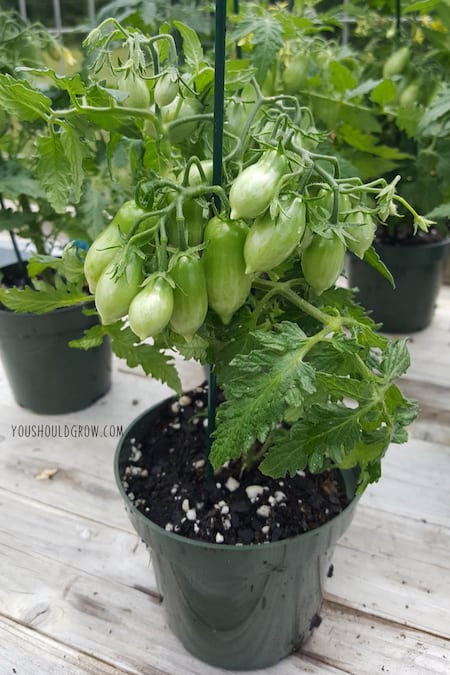
1. Understand that tomato plants come in all shapes and sizes.
If you’ve never grown tomatoes, then you might be surprised at how large and unwieldy the plant can be. The growth habit of tomatoes varies from a tiny little tomato tree less than a foot tall to a sprawling 6+ feet tomato vine…and everything in between!
Many of the most commonly grown tomatoes are indeterminate plants which are the largest type of tomato plant. Be prepared to install tomato cages early on and tie up indeterminate tomato plants throughout the season.
Determinate varieties won’t get quite as large, but they’re not exactly small plants. Sometimes determinates are called bush tomatoes which just means it doesn’t vine out as long as an indeterminate.
Smaller dwarf and micro-dwarf tomato plants are the most compact types of tomato plants, and the most suited to growing in containers and small spaces.
Interesting fact:
Dwarf and microdwarf tomatoes tend to be hairier plants. The little hairs on tomatoes are called trichomes and they help the plant fight off pests and disease.
The growth habit of tomatoes can also be largely influenced by environmental factors like heat, water, pest, or disease stress. So sometimes an indeterminate tomato will have a bushy habit, and sometimes determinates will get up to 6 feet tall. That’s mother nature for you!
Given all the types of tomatoes, it’s good to spend some time choosing the right tomato for your garden.
2. Tomato leaves say a lot about the health of your plants.
It’s worth noting right here that there are two main types of tomato leaves: regular and potato. The regular leaf has a rippled, serrated edge whereas the potato leaf has a smooth edge, not curiously resembling the leaves of a potato plant.
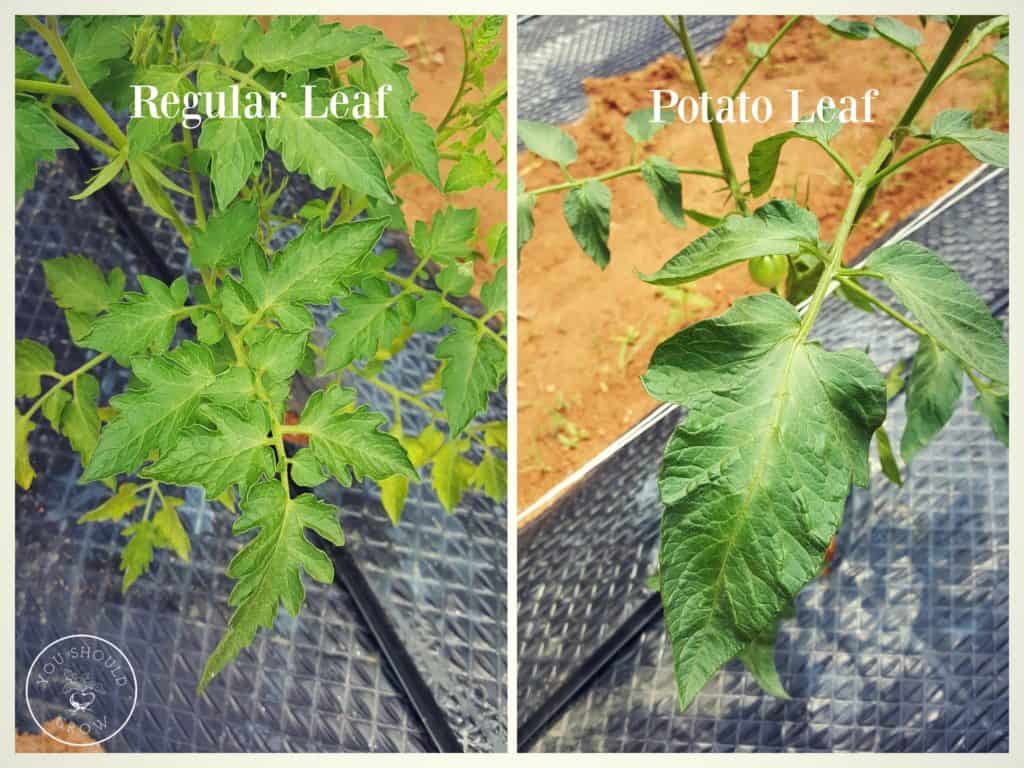
The potato type leaf is caused by a naturally occurring genetic mutation and has occurred many times with many different tomato varieties.
Some will say the potato leaf is more disease resistant, but this is an anecdotal observation and not a scientific certainty. So the type of leaf isn’t as important as how the leaves look.
Wilting tomato leaves are certainly a cause for concern and if you see yellow leaves on your tomatoes, you may have disease or just need to fertilize.
3. Bury the stem to create a stronger root system.
Because tomatoes will grow roots from their stem, burying the stem at planting creates a stronger root system. You’ll want to do the same thing if you’re transplanting tomato seedlings.
Remember I mentioned they can be large unwieldy tomato vines? They need a strong root system to hold them up and supply adequate water and nutrients to make plenty of tomatoes.
Make sure to remove leaves from the buried portion of the stem before planting and leave at least 2 or 3 sets of leaves above ground.
You can either dig a deep hole to set them in or lay them sideways…don’t worry, they’ll adjust themselves naturally to grow upright. If you’re planting lots of tomatoes like us, you’ll love the Stand ‘n Plant tool for getting the job done quick!
4. Don’t fret over blossom end rot.
Blossom end rot is an environmental condition where calcium is restricted within the fruit and a black mushy spot on the bottom appears. The mushy spot is due to lack of calcium within the cell walls on the blossom end of the fruit.
Once this starts happening, it’s too late for affected tomatoes. They won’t be edible. Which is very, very sad. They are not diseased, however, and can be added to compost or fed to your farm animals.
At the point you see the blossom end rot, it is difficult to treat and should get better on its own as the season progresses.
Read our article all about blossom end rot and why you shouldn’t worry about it. If you’ve struggled with end rot, try growing resistant varieties.
Related reading: 5 Unbelievable things Epsom salt does for tomato plants.
5. Tomatoes need to be fertilized to maximize fruit production.
Tomato plants need fertile nutrient-rich soil to make tomatoes. Most gardens will need supplemental fertilization to maintain adequate nutrition for a season of tomatoes.
It is very important to amend the soil early in the season and apply organic fertilizer as often as twice monthly. When they’re first planted, give them a nitrogen and potassium rich fertilizer. When they’re a little older, make sure it’s higher in phosphorous which will feed the plant for making flowers and fruit.
It’s also smart to rotate where you grow your tomatoes. Not only does this give your soil a break, but it will also greatly help minimize pest and disease issues.
6. Tomatoes don’t grow well with potatoes or corn.
Tomatoes and potatoes are closely related which means they are susceptible to the same diseases, plus they are both heavy feeders.
Planted together the two are difficult to manage because they can spread disease from one to the other, attract the same pests, and compete for nutrients in the soil. Plant potatoes more than 6 feet away from tomatoes if possible for the best results.
Corn attracts the armyworm which will also do a lot of damage to tomatoes. If you can, give them as much space apart as possible.
To combat common tomato pests, like aphids and hornworms, companion planting with flowers is not only beautiful but very helpful in attracting predatory insects.
7. Tomatoes love to be planted with basil.
Tomatoes are pretty friendly in the garden but love growing with basil as well as other herbs. Growing basil with tomatoes is said to make them sweeter. Carrots, dill, onions, and chives are also good companion plants for tomatoes.
Some say that growing basil with tomatoes makes them taste sweeter. In addition to companion planting, the quality of your soil is key to growing more flavorful tomatoes.
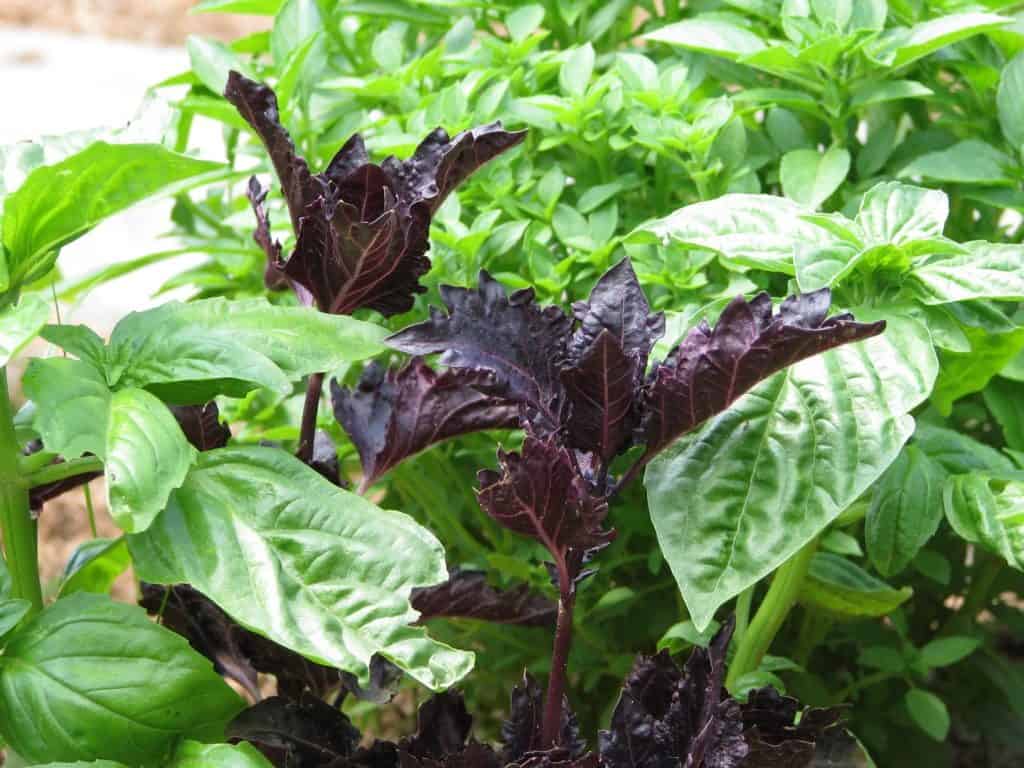
8. It will feel like forever waiting for ripe tomatoes
Green tomatoes take 42 to 110 days to ripen on the vine.
Holy moly, that one still blows my mind sometimes! Every year I see that first baby tomato, and I get so excited! Then it seems like I’m just staring at a green tomato for an entire summer.
Keep in mind that 42 and 110 days are on extreme ends of the spectrum. Most varieties will fall more in the 60-90 day range.
Allowing your tomatoes to ripen on the vine will result in better tasting fruit. That’s one of the reasons store-bought tomatoes are not as yummy as your homegrown produce.
Learn to identify common problems with tomato fruit.
You can use careful water restriction to hasten ripening at the end of the season. But please do so judiciously. If you restrict water too much and too often, you’ll cause undue stress on your plants and actually get fewer tomatoes.
There are some reasons you might also choose to pick your tomatoes at the first sign of blushing and let them ripen on your kitchen counter including diseased plants, pests (like caterpillars, squirrels, and deer), or heavy rain or frost in the forecast.
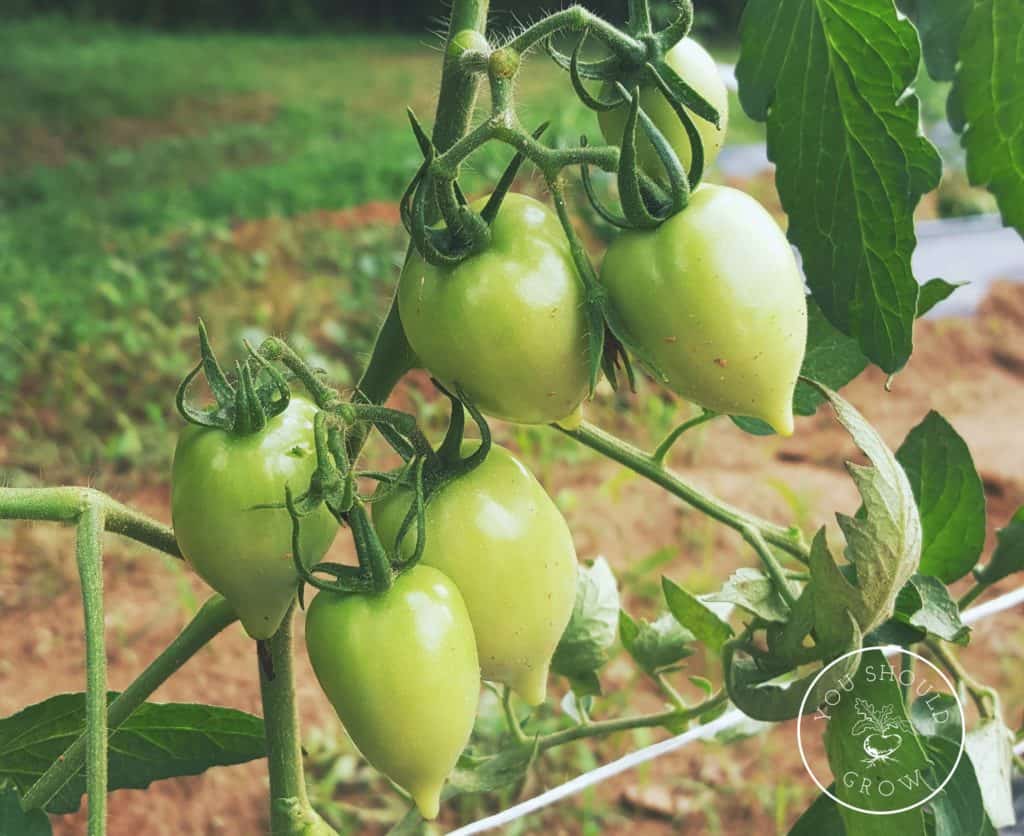
9. Grow the right tomato for your purpose
Maybe I was the only one, but I never knew there were different types of tomatoes for salads, slicing, and sauce. Most of us think of tomatoes as the sweet and juicy type you chop into fresh summer salad or slice for your sandwich.
It never occurred to me that there are different types of tomatoes that make them more suited for making pastes and sauces. They’re cleverly called paste tomatoes.
How are paste tomatoes different from slicing tomatoes? Paste tomatoes are meatier and have less juice, gel, and seeds. Whereas slicing tomatoes have a juicier seed cavity and are better suited to fresh eating.
Of course, you can slice and eat a fresh paste tomato. The texture may or may not be pleasing to you, but they do just fine on a sandwich.
Slicing and paste tomatoes are generally large tomatoes. They can weigh 6 ounces to over a pound!
There are also cherry tomatoes which are the little ones you can pop in your mouth and eat whole and salad tomatoes which are about a 2 oz size and would be eaten in 2 or 3 bites.
When your kitchen is overrun with garden tomatoes, make sure you preserve some of your tomatoes to eat after the season is over.
10. There are literally thousands of varieties of tomatoes to grow.
But you won’t find much variety in your local gardening center. The only way to experience this is to start your tomatoes from seed.
There are some really exciting seed catalogs out there. SeedsNow, Johnnys, Seeds of Change, Seed Savers Exchange, and Baker Creek are some of the most fun to go through.
Of course, if you’re saving seed, then you’ll have your own supply to grow from. We have a few favorite tomatoes that we grow every year, but we also like to try some new things.
We have grown hundreds of varieties of tomatoes, and we have created a few of our own. Breeding tomatoes is a fun hobby and has led to some pretty unique varieties on our farm. See our tomato plants.
What’s your top tip for growing tomatoes?
Share your experience in the comments below!


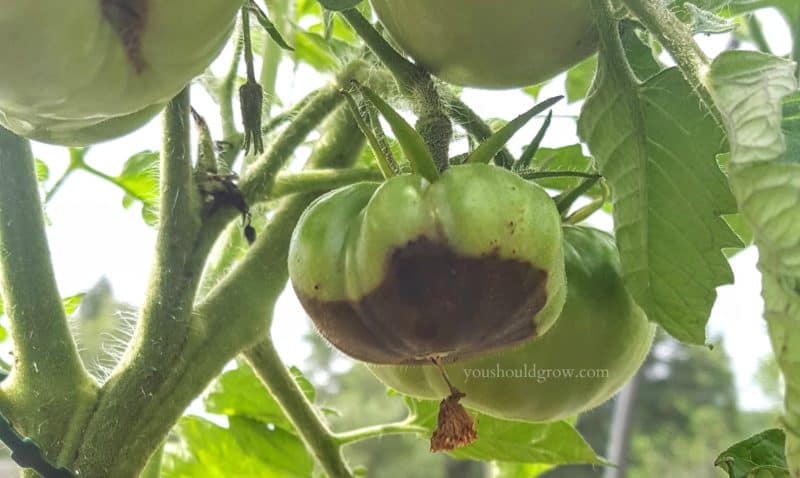
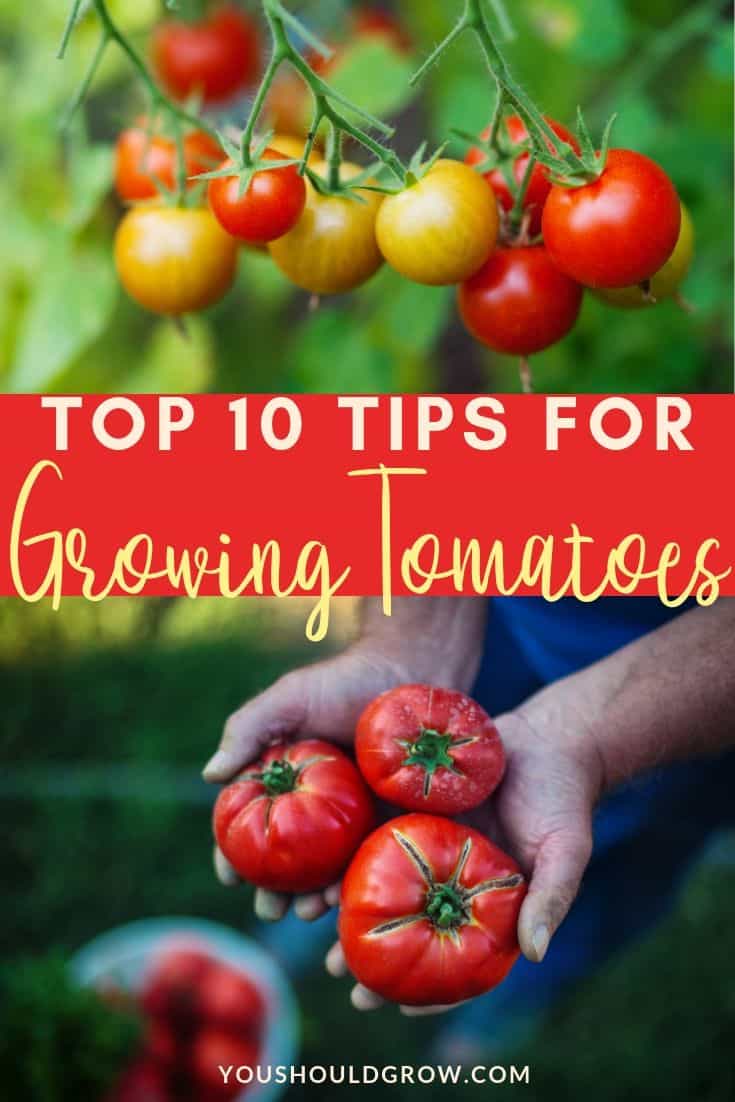
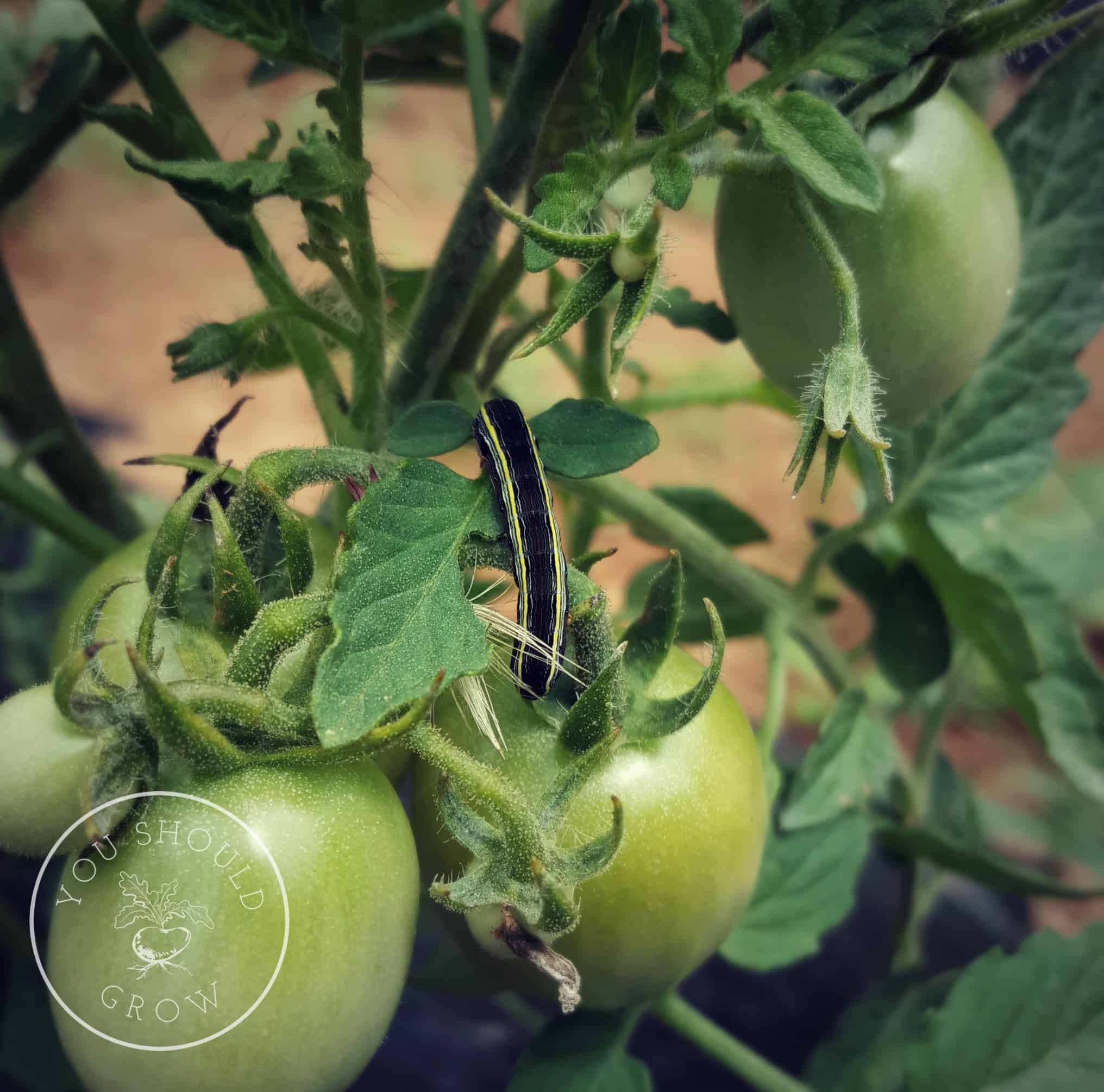
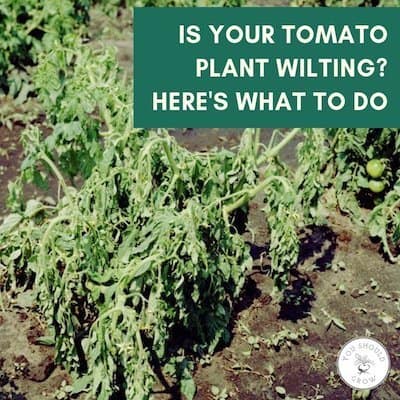
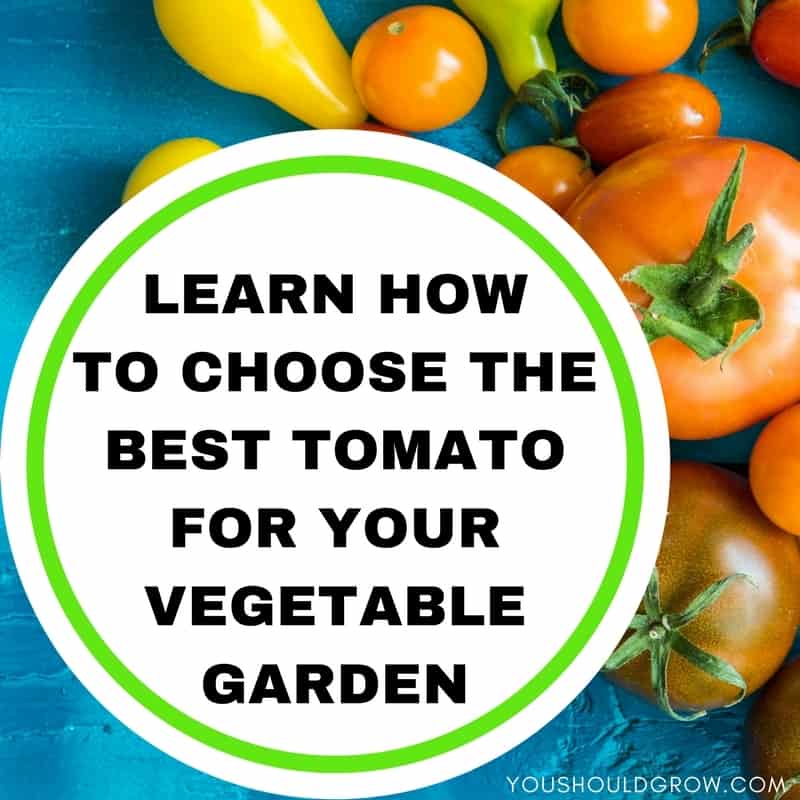
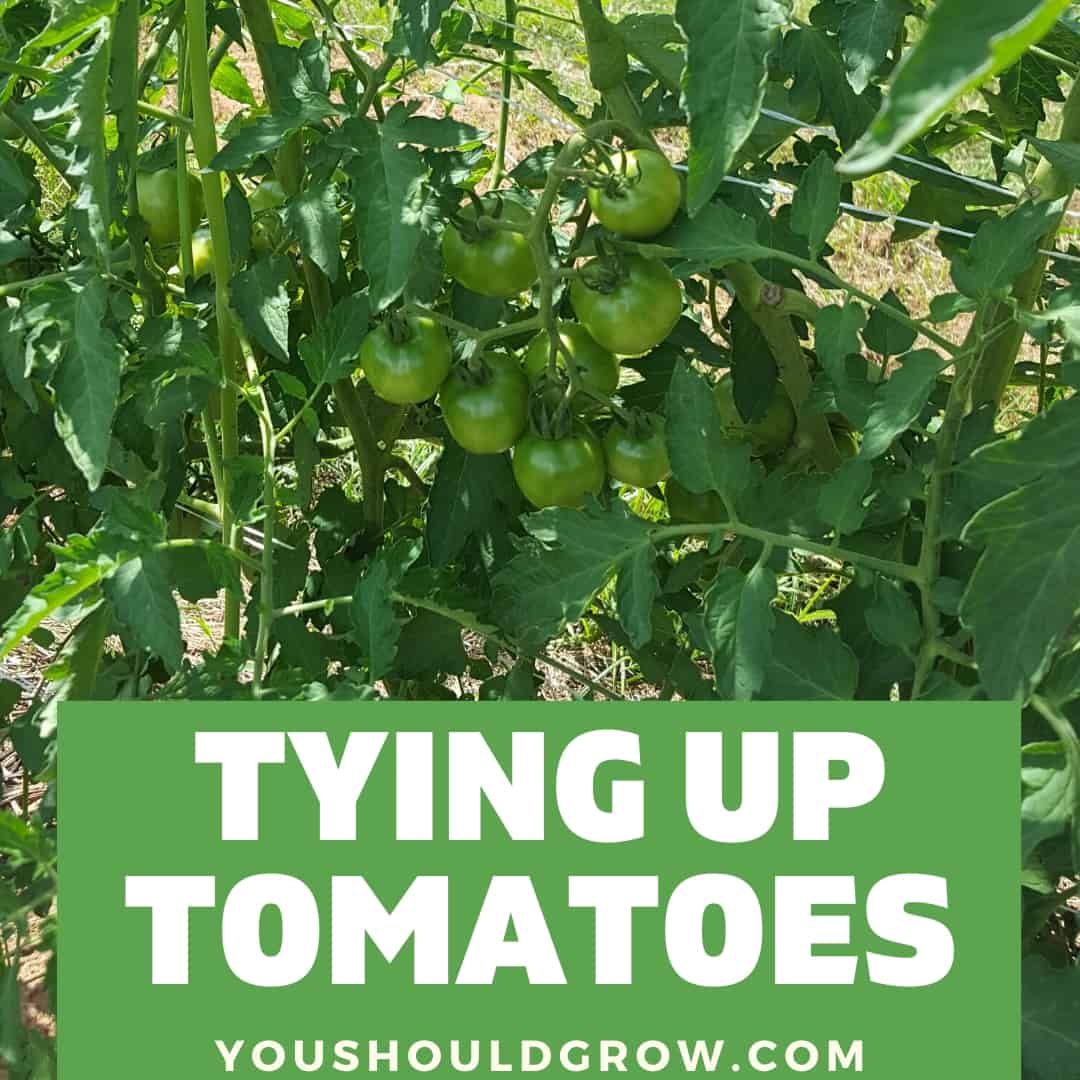
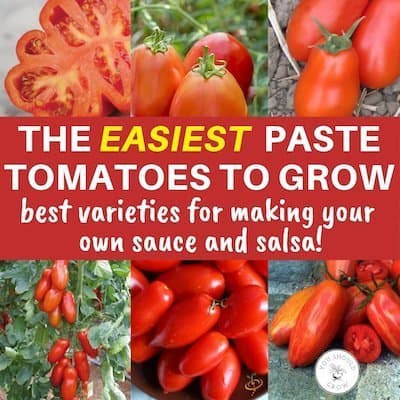
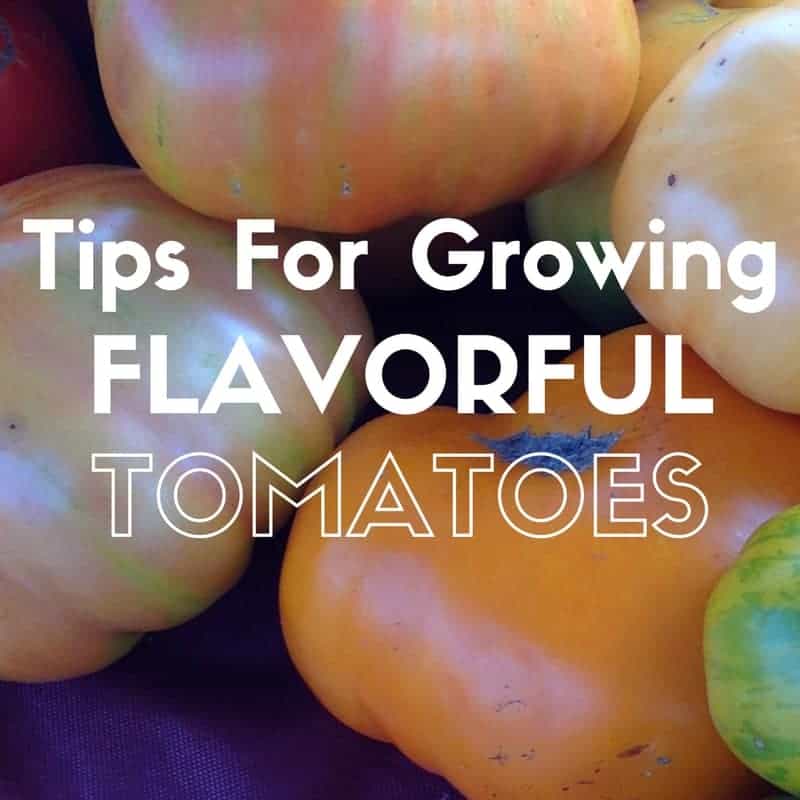
Great list! The amount of time it takes for them to ripen always gets me. I start wondering if I’m doing something wrong, then my much more patient better half reminds me to calm down and wait 🙂
I’m the same way! The struggle is real, Rebecca. 😉
Great post. It is getting cooler here so we ended up picking all of our tomatoes today. The rest will have to rippen in the house. I think the toughest part is making sure they have the fertilizer they need.
Very true, Karen. They are kinda high maintenance in the nutrients department. 🙂
I have so, so many green tomatoes in my garden right now. I’m finally going to learn how to cook them.
I seek out over-tall but not-rootbound tomato seedlings. I plant them dryfarm style: Instead of laying the tomato stem sideways, I dig a hole deep enough for the whole stem, strip off all the leaves except for a tuft at the top, and bury the whole thing except for the tuft. This is for maximum drought tolerance in my dry-summer climate.
Planted that way fairly early in the spring, and soaked thoroughly at planting, some of them can get along with no irrigation at all for the rest of their lives.
Yes, getting that stem buried is super important for healthy root structure and make a big difference with watering needs. Thanks, Martha!
Tomatoes will ripen quicker if you back off on one of your regular waterings
Hi, Sharon! Thanks for reading! Some people do use restricted watering at the end of the season to cause stress to the plants that may speed up ripening before a frost. This is not something we do but a hot, dry summer in the south is pretty stressful on plants already. 🙂
We also strip the leaves and bury deep. I make sure they are watered very well then lay at least 4-5 layers of news papers or (our favorite) heavy paper FEED sacks, that have had the sewn end cut off. We just open the sacks and lay them down on the soiland around the tomatoes. Next we mulch the entire bed with about 4 -6 inches of wheat straw, cage and stake each plant.
Some years we never water again. I put egg shells, rabbit manure, a handful of Epson salts, a handful of alfalfa pellets and a bitorganic all purpose fertilizer. I don’t know if this is overkill or even the right thing to do but for the 36 years we always raise more tomatoes than we can eat, can or give away!! We love gardening in NEW Kansas!
Hey, Debbie! Sounds like you’ve got your system down pat, and if it ain’t broke, don’t fix it! Heavy mulching like you do is very effective at keeping out weeds and retaining moisture. Thumbs up!
Great tips here. If they don’t all ripen on the vine, I pick them and put in a paper bag with a few ripe ones. Check them every day – they will ripen for you.
I sprinkle powdered milk in, and around the soil to help control blossom end-rot. It works great!
If ca of egg shells is not readily absorbable we can add crushed Ca tablet ( expired or nearly)
to expire
If you feel your soil needs calcium supplement, you can add tablets like Tums that contain calcium. If possible, I recommend you have your soil tested before doing so as it may not be necessary.
I grow my Cherry Tomato plant in pots, Should I prune my Cherry Tomato plant? Because it has lost all of the leaves? Please advise….
Also can I also pvc pipes? Please advise……
Hi Tod, I’m not sure I understand your question. If your tomato plant has lost ALL its leaves, it sounds like it has been diseased. If that’s the case, then pruning won’t help. On a healthy plant, we prune tomatoes to remove leaves from the bottom up and to remove suckers to control the size of the plant. For the second question, what are you using the pvc pipes for? Yes, you can use them to build a trellis and support your tomato plant. You can also drill holes in the bottom half of the pipe and bury them to make a deep watering system. You’re welcome to join me in our Facebook group, where you can post pictures and I may be able to help more. facebook.com/groups/youshouldgrow
Thank you for your help.
I realize you can’t reverse blossom end rot in existing fruit, but I have had success in getting it to go away in the same plant with new fruit. I use blossom end rot spray (which I think is calcium?) and the new fruit that appear don’t have it. I am wondering if I should put eggshells in the garden to try to prevent it. It’s the bane of my existence as it always strikes my favorite plants!
Hi, Thomas! There are many myths around blossom end rot and calcium. Eggshells are good for your soil, but throwing more calcium at tomatoes isn’t the solution to blossom end rot. My full thoughts on the subject of BER are here.
Thank you Laura… a very informative article. Too much water, too little water, so many things cause it… I’ll just try not to worry about it too much and keep the plants as healthy as possible.
I have trouble every year with leaf spot of yellow and brown spots. I have rotated planting and am getting discouraged. Perhaps I need lime?